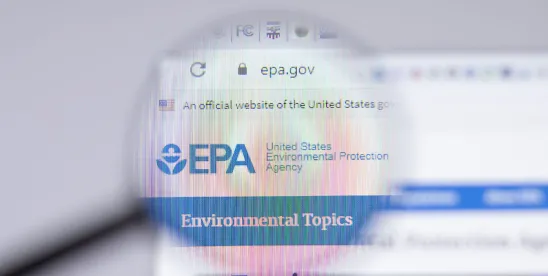The U.S. Environmental Protection Agency (EPA) announced on June 13, 2024, the change in the peer review mechanism from the letter peer review to a Science Advisory Committee on Chemicals (SACC) peer review; the addition of the draft human health hazard assessment for 1,2-dichloroethane for peer review; and the availability of and solicitation of comment on the list of candidates under consideration for selection as ad hoc peer reviewers that will assist SACC with its peer review of EPA’s draft risk evaluation of 1,1-dichloroethane and human health hazard assessment of 1,2-dichloroethane. 89 Fed. Reg. 50326. The list of candidates provides the names and biographical sketches of all interested and available candidates identified from the responses to the call for nominations and other sources. EPA states that public comments on these candidates will assist it in selecting ad hoc peer reviewers to assist SACC with the identified peer review. Comments are due June 28, 2024.
In its June 13, 2024, press release, EPA states that it is conducting risk evaluations of 1,1-dichloroethane and 1,2-dichloroethane under the Toxic Substances Control Act (TSCA). According to EPA, 1,1-dichloroethane is a solvent used primarily in industrial applications, such as a reactant for the manufacture of other chemicals or as a laboratory chemical. EPA did not identify any consumer uses for 1,1-dichloroethane. 1,2-Dichloroethane is primarily used to manufacture vinyl chloride.
EPA states that it previously planned to use a letter peer review to obtain comments on the 1,1-dichloroethane draft risk evaluation but decided to schedule a SACC meeting to review the draft risk evaluation instead. In addition to the draft risk evaluation for 1,1-dichloroethane, EPA also seeks feedback on the draft hazard assessment for 1,2-dichlororethane because the Agency used data on the toxicity of 1,2-dichloroethane to fill gaps in the understanding of the toxicity of 1,1-dichloroethane. EPA notes that “[t]his is a well-established risk assessment practice for chemicals that share structural similarities.” According to EPA, the draft hazard assessment for 1,2-dichloroethane will also help inform the draft risk evaluation for this chemical, which EPA anticipates releasing for public comment and any necessary peer review at a later date.
The SACC peer review will take place during a public meeting. EPA also plans on holding a preparatory virtual public meeting for SACC and the public to consider and ask questions regarding the scope and clarity of the draft charge questions and areas of review. Registration information for both meetings will be posted on the peer review website in the coming months.




 />i
/>i
